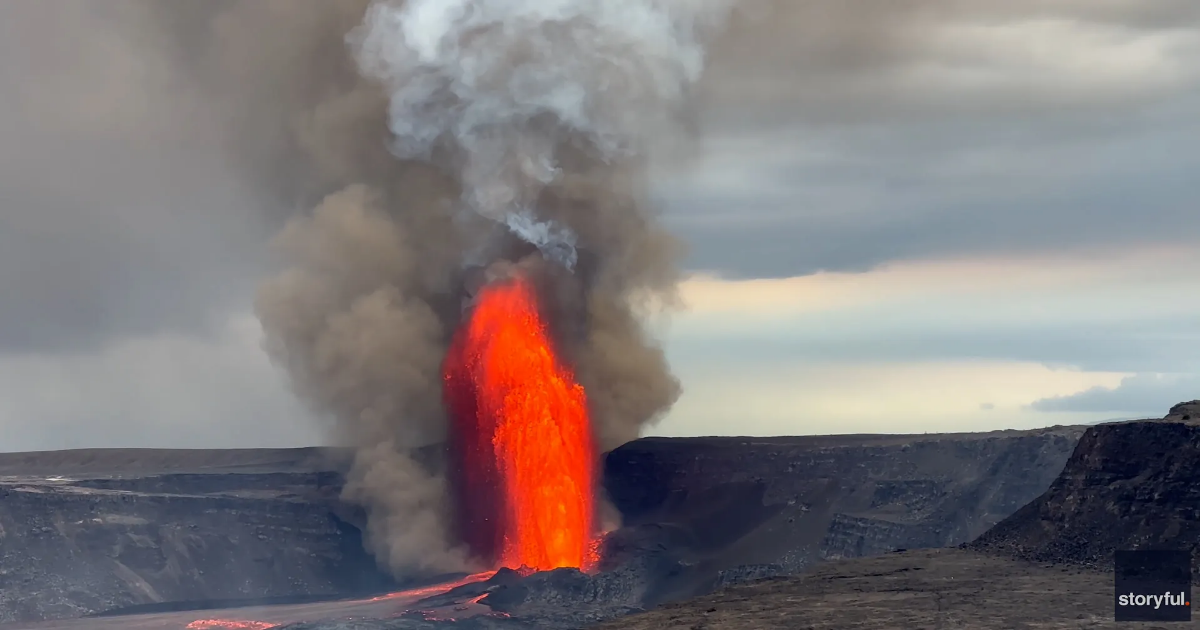
A volcano’s latest eruption on Hawaii’s Big Island fountained lava more than 1,000 ft. into the sky on May 25.
The Kilauea volcano, on the island of Hawaii, had a plume reach about 5,000 ft. high, according to a Hawaiian Volcano Observatory status report. The eruption was in a closed area of Hawai’i Volcanoes National Park, located about 200 miles and several islands southeast of Honolulu. The national park has Kilauea and Mauna Loa, the latter being the world’s largest active volcano. Kilauea is one of the world’s most active volcanoes, the U.S. Geological Survey said.
With its summit at 4,091 ft., Kilauea has had lava fountaining from its Halemaumau crater since Dec. 23, the observatory, which is part of USGS, said in its May 25 report. This is the 23rd episode of the ongoing eruption from Halemaumau, which is part of Kilauea’s larger caldera at its summit.
The May 25 eruption occurred for about six hours in two vents of Halemaumau, with the north vent ending at 9:48 p.m. local time and the south vent at 10:25 p.m., according to USGS updates.
Overnight, officials were primarily concerned with high levels of volcanic gas such as water vapor, carbon dioxide and sulfur dioxide that can have far-reaching effects downwind. Sulfur dioxide reacts in the atmosphere to create visible haze of volcanic smog, called vog. In high concentrations, vog and sulfur dioxide can cause respiratory problems and other health concerns.
Other concerns are what’s called “Pele’s hair” and other volcanic fragments from lava fountains. Pele’s hair is strands of volcanic glass that can cluster together and look like tumbleweeds. The volcanic fragments fall down within a few hundred yards from eruptive vents, though strong winds can launch the light particles downwind.
On the ground, Pele’s hair and other fragments can cause skin and eye irritation, and officials warn residents and visitors to minimize exposure to these particles.
At Kilauea’s summit, there are significant hazards with the crater’s instability, ground cracking and rockfalls, especially after earthquakes. But, the area has been closed to the public since 2007.
Most episodes of Halemaumau’s lava fountaining last a day or less, officials said. They are separated by pauses in activity lasting several days, generally.
The observatory planned to issue another update the morning of May 26 local time.
